كيف يمكنني تحديد مصنعي الملابس الداخلية الموثوقة والأخلاقية في الصين؟
إن العثور على شركة مصنعة للملابس الداخلية الموثوقة في الصين تشعر بأنها ساحقة. مع الآلاف من الخيارات وقصص الرعب من قضايا الجودة أو الانتهاكات الأخلاقية ، تكافح العديد من العلامات التجارية من أجل تحديد الشركاء الجديرين بالثقة لإنتاجهم الحميم.
لتحديد الشركات المصنعة للملابس الداخلية الموثوقة والأخلاقية في الصين ، ابحث عن شهادات الصناعة (SA8000 ، BSCI ، SEDEX) ، وتقييم قدرات الإنتاج ، وتقييم مرافق السلوك ، والتحقق من عمليات مراقبة الجودة ، والتحقق من خبرة الصناعة ، وتقييم شفافية الاتصال ، ومراجعة طاقة الإنتاج وأوقات الإنتاج.
لقد عملت مع العشرات من الشركات المصنعة للملابس الداخلية في جميع أنحاء آسيا على مدار العقد الماضي ، وقد تعلمت أن العثور على شريك الإنتاج المناسب يتطلب منهجًا منهجيًا. دعنا نستكشف العوامل الرئيسية التي تفصل بين الشركات المصنعة الجديرة بالثقة عن العوامل الإشكالية.
ما هي شهادات الصناعة التي يجب أن أبحث عنها؟
غالبًا ما أواجه العلامات التجارية التي تشعر بالضياع في بحر المختصرات في الصناعة. الشهادات مهمة بشكل كبير ، ولكن ما هي مؤشرات ذات مغزى حقًا لجودة التصنيع والأخلاق؟
تشمل الشهادات الرئيسية التي يجب البحث عنها عند تقييم الشركات المصنعة للملابس الداخلية الصينية SA8000 للمساءلة الاجتماعية ، و BSCI لممارسات العمالة الأخلاقية ، و Sedex لأخلاقيات سلسلة التوريد ، واللف للإنتاج المسؤول ، و ISO 9001 لأنظمة إدارة الجودة. هذه تتحقق من الامتثال للمعايير الدولية.
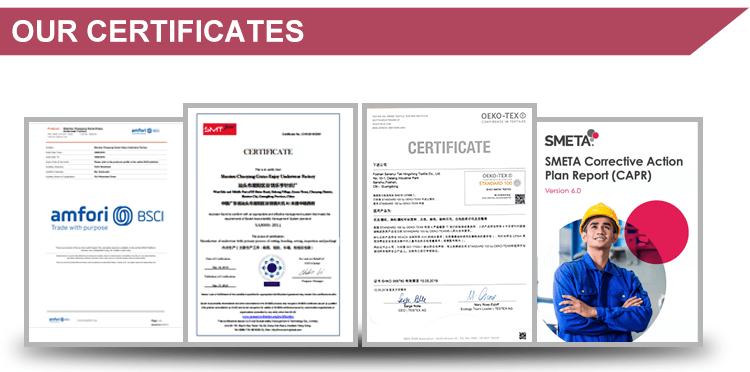
تمثل هذه الشهادات أكثر بكثير من مجرد الأعمال الورقية. في تجربتي في العمل مع الشركات المصنعة عبر مراكز الملابس في الصين ، رأيت كيف تترجم هذه المعايير إلى ممارسات العالم الحقيقي. يوفر SA8000 ، على سبيل المثال ، إطارًا شاملاً يعالج ساعات العمل ، والتعويض العادل ، وظروف مكان العمل - جميع العناصر الحرجة في صناعة كانت ممارسات العمالة تاريخياً.
لقد زرت مؤخرًا شركة تصنيع في شانتو استثمرت بكثافة في عملية إصدار شهادة BSCI الخاصة بهم. كان الفرق ملحوظًا فورًا عند الدخول في منشأتهم - لافتات خروج الطوارئ الواضحة ، وأنظمة التهوية المناسبة ، والإضاءة الكافية في محطات العمل ، وجداول كسر منظمة للعمال. تم توثيق عمليات مراقبة الجودة الخاصة بهم بدقة ، مع نقاط تفتيش عالية الجودة في كل مرحلة إنتاج. هذا المستوى من التنظيم والالتزام بالمعايير المترجمة مباشرة إلى اتساق منتجاتها ورضا العمال. لقد لاحظت أن الشركات المصنعة التي تحافظ على هذه الشهادات عادة ما تكون لها معدلات عيب أقل بنسبة 30-40 ٪ من المصانع غير المعتمدة ومعدلات احتباس العمال المرتفعة بشكل ملحوظ ، مما يعزز جودة المنتج من خلال الموظفين ذوي الخبرة.
كيف يمكنني تقييم قدرات الإنتاج والتخصص؟
عندما بدأت في الحصول على مصادر من الصين لأول مرة ، ارتكبت خطأ مكلفًا في افتراض أن جميع الشركات المصنعة للملابس الداخلية لديهم قدرات مماثلة. لا يمكن أن يكون الواقع أكثر اختلافًا.
غالبًا ما يتخصص مصنعو الملابس الداخلية الصينية في أنواع محددة من الملابس الحميمة. تقييم قدراتها الأساسية من خلال فحص معداتهم ، وخبرة معالجة المواد ، وتقنيات البناء ، وأمثلة الإنتاج السابقة. طلب عينات من المنتجات المشابهة لك لتقييم الجودة والحرفية.
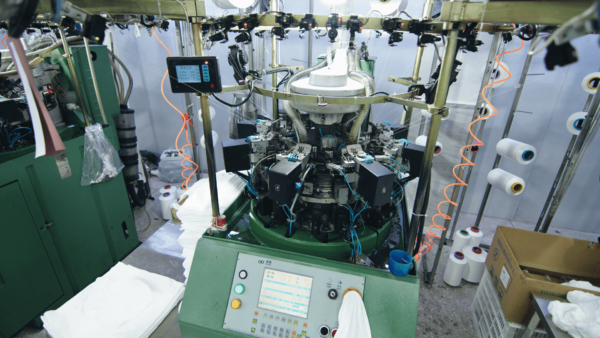
لقد تعلمت من خلال التجربة أن التخصص في تصنيع الملابس الداخلية أصبح أعمق بكثير من فئات المنتجات فقط. خلال زيارات المصنع في جميع أنحاء مقاطعة قوانغدونغ ، لاحظت أن الشركات المصنعة تميل إلى تطوير مجموعات الخبرة حول تقنيات أو مواد أو منتجات محددة. على سبيل المثال ، تميزت مصنع واحد قمت بزيارته في Shenzhen على وجه التحديد في حمالات الصدر المقولبة مع معداتها المتخصصة في تشكيل الحرارة وعمليات التبريد المعايرة بدقة ، بينما تكافح مع تطبيقات الدانتيل. آخر في Dongguan كان لديه تقنية سلسة بالليزر ولكنها تفتقر إلى العمالة الماهرة للإنشاءات المعقدة للأسلاك.
عند تقييم الشركاء المحتملين ، أولي الآن اهتمامًا خاصًا لمجموعات مهارات المخزون والمشغل. هل تتطابق تشكيلة المعدات الخاصة بهم مع المتطلبات التقنية لتصميمي؟ هل استثمروا في آلات متخصصة لأساليب بناء محددة مثل الترابط أو الحياكة غير الملحومة أو الغطاء المتعدد الإبرة؟ أطلب أيضًا معلومات مفصلة حول قنوات مصادر المواد الخاصة بهم - يحتفظ الشركات المصنعة المنشأة بالعلاقات مع الموردين الموثوق بهم والموردين ، مما يضمن الجودة المتسقة والمصادر الأخلاقية. أقوم دائمًا بمراجعة قدرات أخذ العينات الخاصة بهم أيضًا ، حيث تعكس قدرة الشركة المصنعة على إنتاج نماذج أولية بدقة دقة إنتاجها. يأتي التقييم الأكثر إخبارًا من فحص إنتاجهم الحالي - أطلب رؤية العناصر التي تنطلق من خطوطها التي تتطلب تقنيات بناء مماثلة لمنتجاتي المخطط لها.
ما الذي يجب أن أبحث عنه أثناء تقييم المنشأة؟
لقد فوجئت بالاختلافات الصارخة بين عروض المصنع والحقائق التشغيلية. كيف يمكنك قطع الجولات المرفوعة لتقييم المنشأة حقًا؟
أثناء تقييم المنشأة ، فحص ظروف العمل ، وجودة المعدات وصيانتها ، والنظافة ، والتنظيم ، والمعنويات العاملة ، ومعايير السلامة. انظر إلى ما وراء صالة العرض إلى مناطق الإنتاج ، وغرف الاستراحة ، ومحطات مراقبة الجودة. توفر الزيارات غير المعلنة الصورة الأكثر دقة للعمليات.
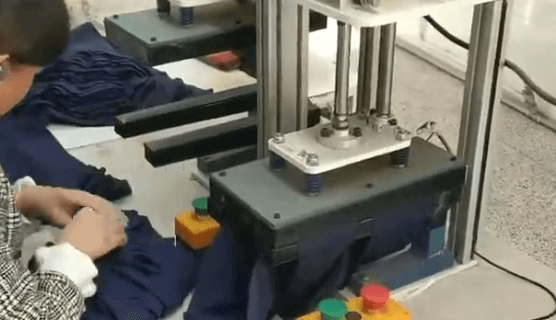
لقد أجريت أكثر من 50 تقييمًا للمصانع في جميع أنحاء الصين ، وقد طورت نهجًا منهجيًا يتجاوز الجولة الإرشادية القياسية. أطلب دائمًا رؤية تدفق الإنتاج بأكمله - من التخزين المادي إلى القطع والخياطة والتشطيب ومراقبة الجودة والتعبئة. تكشف هذه النظرة الشاملة عن الكثير من التطور التشغيلي للشركة المصنعة والاهتمام بالتفاصيل. في إحدى الزيارات التي لا تنسى إلى مصنع بالقرب من قوانغتشو ، لاحظت تنظيمًا نقيًا في مناطق العرض الخاصة بهم ، لكن اكتشفوا فيما يتعلق بتراكم الغبار على المعدات في قاعات الإنتاج الثانوية ، مما يشير إلى ممارسات الصيانة غير المتسقة التي يمكن أن تؤثر على جودة المنتج.
يعد التفاعل بين العمال مجالًا حيويًا آخر للتقييم. ألاحظ ما إذا كان الموظفون يبدون متوترين، وما إذا كان لديهم مساحة شخصية كافية في محطات العمل، وما إذا كانوا يستخدمون معدات السلامة المناسبة. لقد تعلمت الاهتمام بالتفاصيل الصغيرة مثل الإضاءة المناسبة والمقاعد المريحة وجودة التهوية - وهي العوامل التي تؤثر بشكل مباشر على رفاهية العمال وجودة الإنتاج. عندما يكون ذلك ممكنًا، أقوم بالزيارات أثناء استراحات الغداء لمراقبة المرافق وتوفير الوجبات. غالبًا ما تحكي مناطق الاستراحة قصة أكثر صدقًا عن معاملة العمال من أي وثيقة شهادة. وأوصي أيضًا بالتحقق من مرافق الإقامة للمصانع التي توفر السكن، حيث تؤثر ظروف المعيشة بشكل كبير على رضا العمال والاحتفاظ بهم. يعد التحكم في درجة الحرارة أمرًا مهمًا بشكل خاص لإنتاج الملابس الداخلية، وخاصة بالنسبة للمواد المطاطية والمواد اللاصقة، لذلك أتحقق من أن أنظمة المناخ تحافظ على ظروف ثابتة في جميع أنحاء مناطق الإنتاج.
كيف يمكنني التحقق من عمليات مراقبة الجودة؟
تعد كل مصنع الجودة ، ولكن كيف يمكنك التمييز بين أنظمة الجودة القوية والتأكيدات الفارغة؟
للتحقق من عمليات مراقبة الجودة ، فحص وثائق مراقبة الجودة ، وأنظمة تتبع العيوب ، ومنهجيات التفتيش ، وإجراءات أخذ العينات ، وبروتوكولات الاختبار. ابحث عن عمليات التفتيش في الخط في مراحل إنتاج متعددة ، ومعايير AQL ، وإجراءات واضحة لمعالجة مشكلات الجودة.
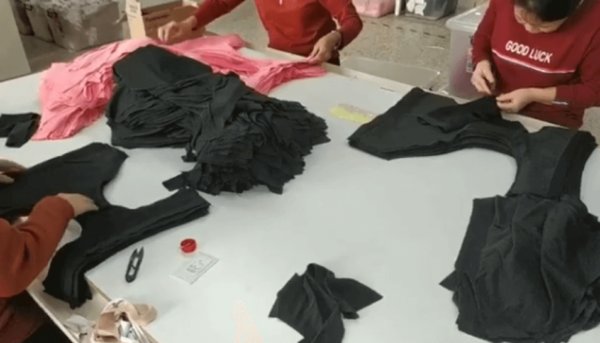
لقد أظهرت تجربتي أن مراقبة الجودة في تصنيع الملابس الداخلية تتطلب عمليات متخصصة تتجاوز إنتاج الملابس القياسية. تتطلب الملابس الحميمة الدقة في المقاس، والمرونة المتسقة، والبنية التي تركز على الراحة - وهي المجالات التي يمكن أن تؤدي فيها الانحرافات الصغيرة إلى جعل المنتجات غير قابلة للارتداء. لقد قمت بتطوير نهج منهجي لتقييم قدرات مراقبة الجودة لدى الشركة المصنعة مما وفر لعملائي ساعات وموارد لا حصر لها.
أولاً ، أدرس نقاط التفتيش الخاصة بهم طوال فترة الإنتاج. يقوم الشركات المصنعة الرائدة بتنفيذ ما لا يقل عن خمس نقاط تحكم حرجة: فحص المواد قبل القطع ، بعد القطع ولكن قبل الخياطة ، أثناء الخياطة (الفحص داخل الخط) ، بعد الانتهاء من كل قطعة ، وأخذ العينات العشوائية النهائية باستخدام معايير AQL (حد جودة مقبول). أطلب توثيق إجراءات مراقبة الجودة الخاصة بهم وأطلب رؤية سجلات التفتيش الفعلية ، والتي تكشف عن كل من منهجيتها وشفافيتها. أقوم أيضًا بتقييم نظام تصنيف العيب الخاص بهم - كيف يصنفون ويتناولون العيوب الصغيرة والرائعة والحرجة مجلدات حول أولويات الجودة الخاصة بهم. عنصر آخر حاسم هو بروتوكولات اختبار المواد الخاصة بهم من أجل الصعود ، والاحتفاظ بالمرونة ، والمتانة. استثمرت إحدى الشركات المصنعة التي عملت معها في Shantou في مختبر في الموقع للاختبار الأولي ، مما قلل بشكل كبير من مشكلات الجودة المرتبطة بالنسيج. أخيرًا ، أقوم بتقييم حلقة ملاحظاتهم - كيف تُبلغ مشكلات الجودة تحسينات العملية. يحتفظ الشركاء الأكثر موثوقية بسجلات مفصلة لتحديات الجودة السابقة والإجراءات التصحيحية التي تم تنفيذها ، مما يدل على الالتزام بالتحسين المستمر بدلاً من مجرد تلبية الحد الأدنى من المعايير.
لماذا تعتبر تجربة الصناعة والمراجع مهمة؟
في أيام مصادري المبكرة ، قمت بأقل من تقدير أهمية تاريخ الشركة المصنعة وعلاقات العميل. ما الذي يجعل هذه العوامل المؤشرات الحاسمة للموثوقية؟
توفر خبرة ومراجع الصناعة نظرة ثاقبة على استقرار الشركة المصنعة ، وقدرات حل المشكلات ، ورضا العملاء. ابحث عن الشركات المصنعة التي لا يقل عن 5 إلى 10 سنوات في إنتاج الملابس الداخلية ، وطلب مراجع العميل من فئات المنتجات المماثلة ، والاستفسار عن علاقات العلامة التجارية طويلة الأجل.
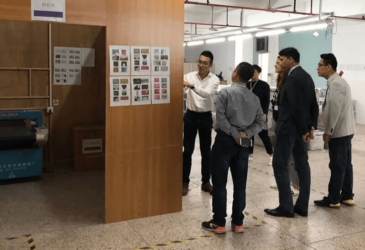
خلال سنواتي في صناعة الملابس الحميمة ، لاحظت أن أكثر الشركات المصنعة موثوقية تشترك في سمة مشتركة: طول العمر إلى جانب التحسين المستمر. يمثل تصنيع الملابس الداخلية تحديات فريدة لا يمكنها إلا أن تعالجها بشكل فعال. عندما أقوم بتقييم خلفية صناعة الشركة المصنعة ، أنظر إلى ما بعد السنوات البسيطة في العمل لفهم رحلة تطورها وتخصصها. من المحتمل أن يكون المصنع الذي ينتج ملابس المرأة الحميمة لمدة 15 عامًا قد واجه وحل عدد لا يحصى من تحديات البناء ، وقضايا الأداء المادي ، والتناقضات التي لا تزال تكتشف العمليات الأحدث.
Reference checking has become one of my most valuable assessment tools. I specifically request references from brands producing similar product types at comparable volume levels. The questions I ask these references go beyond general satisfaction to specific performance metrics: How consistent is sizing across production runs? How effectively does the manufacturer communicate production challenges? What is their on-time delivery rate? How do they handle quality issues when they arise? One particularly revealing question I always include: "How has the manufacturer improved their processes during your partnership?" توفر الإجابات نظرة ثاقبة على التزامهم بالتقدم بدلاً من الرضا. لقد وجدت أن الشركات المصنعة التي تحافظ على شراكات مع العلامات التجارية المعمول بها لمدة 5 سنوات تُظهر عادة قدرات حل المشكلات المتفوقة وشفافية الاتصالات. خلال تقييم حديث للمصنع ، اكتشفت أن الشركة المصنعة قد حافظت على علاقات مع ثلاث علامات تجارية أوروبية رئيسية لأكثر من سبع سنوات-هذا النجاح طويل الأجل مع العملاء الذين يطالبون في النهاية أثبت أنه أكثر قيمة من معرضهم المثير للإعجاب.
ما مدى أهمية التواصل والشفافية؟
لقد أدى سوء التواصل إلى عرقلة شراكات إنتاج أكثر مما يمكنني الاعتماد عليه. ما هي معايير الاتصالات التي يجب أن تتوقعها العلامات التجارية من الشركات المصنعة الموثوقة؟
التواصل الفعال والشفافية هي التأسيسية لشراكات التصنيع الناجحة. تقييم أوقات الاستجابة ، والكفاءة في اللغة الإنجليزية للموظفين الرئيسيين ، ووضوح الوثائق ، والرغبة في الاعتراف بالتحديات ، وأنظمة الاتصالات لتحديثات الإنتاج وحل المشكلات.

من خلال إدارة الإنتاج عبر العديد من المصانع الصينية ، تعلمت أن القدرة على الاتصال لا تقل أهمية عن القدرة التقنية في تحديد نجاح الشراكة. تتضمن عملية تصنيع الملابس الداخلية العديد من القرارات التقنية والتعديلات التي تتطلب تبادل واضحة في الوقت المناسب بين ممثلي العلامة التجارية والمصنعين. أقوم بتقييم إمكانات الاتصال من التفاعل الأول ، مع الإشارة إلى أوقات الاستجابة ، وفهم المتطلبات الفنية ، والرغبة في طرح أسئلة توضيح بدلاً من وضع افتراضات.
يظل إتقان اللغة أحد الاعتبارات الهامة على الرغم من التقدم التكنولوجي في الترجمة. أبحث عن الشركات المصنعة التي لديها مديري حسابات يظهرون مهارات قوية في اللغة الإنجليزية، خاصة فيما يتعلق بالمصطلحات الفنية الخاصة ببناء الملابس الحميمة. وضوح التوثيق لا يقل أهمية - فعروض الأسعار التفصيلية، والجداول الزمنية الشاملة للإنتاج، وتقارير الجودة المنظمة تشير إلى أنظمة اتصالات داخلية منظمة. أقوم أيضًا بتقييم الشفافية فيما يتعلق بالإمكانيات والقيود. يناقش الشركاء الأكثر موثوقية الذين عملت معهم صراحة المجالات التي يتفوقون فيها والتي يواجهون فيها التحديات، بدلاً من المبالغة في الوعود. أثناء الإنتاج، تصبح أنظمة الاتصالات حاسمة. أفضّل الشركات المصنعة التي تقدم تحديثات منتظمة للإنتاج مع دعم الوثائق المرئية وقد أنشأت بروتوكولات للإبلاغ عن المشكلات المحتملة مبكرًا. قامت إحدى الشركات المصنعة التي أتعاون معها في قوانغدونغ بتطبيق نظام تتبع الإنتاج الرقمي الذي يسمح للعلامات التجارية بمراقبة التقدم خلال مراحل الإنتاج الرئيسية، مع استكمال تقارير الفحص ووثائق حل المشكلات. لقد أدى هذا المستوى من شفافية الاتصال إلى القضاء فعليًا على التأخيرات المفاجئة ومشاكل الجودة التي عادة ما تصيب الجداول الزمنية للإنتاج.
ما الذي يجب أن أعرفه عن القدرة الإنتاجية وأوقات الرصاص؟
تسببت التوقعات غير الواقعية حول القدرة الإنتاجية والتوقيت على صداع لا يحصى من العلامات التجارية. ما هي العوامل التي تحدد تخطيط الإنتاج الواقعي؟
يساعد فهم القدرات الإنتاجية وأوقات الرصاص في وضع توقعات واقعية. تحقق من السعة الإنتاجية الشهرية ، والحد الأدنى من كميات الطلب (MOQS) ، وتقلبات السعة الموسمية ، وأنظمة تخطيط الإنتاج ، وأوقات العروض القياسية لأخذ العينات والإنتاج بالجملة. عامل في الجداول الزمنية لمصادر المواد وأسباب التأخير المحتملة.
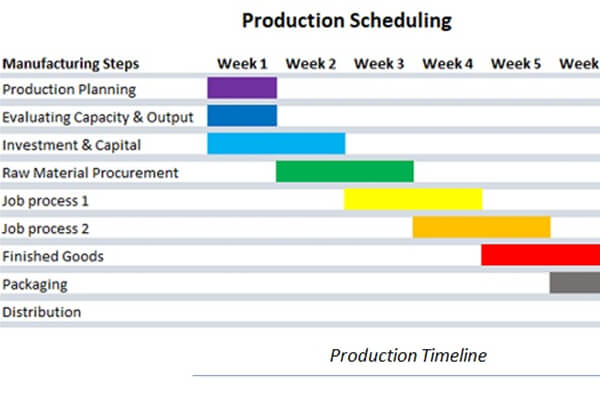
في سنواتي ، أشرف على تخطيط الإنتاج للعلامات التجارية الحميمة للملابس ، قمت بتطوير نهج مفصل لتقييم مطالبات الشركة المصنعة. تقدم العديد من المصانع الناتج القصوى النظرية ، ولكن هذا نادراً ما يعكس حقيقة الإنتاج المستدامة التي تركز على الجودة. أقوم بتقييم السعة من خلال عدسات متعددة: عدد الآلات ونوعها ، وأرقام العمال ومستويات المهارة ، وتنظيم خط الإنتاج ، وسجلات الإخراج التاريخية. بالنسبة لتصنيع الملابس الداخلية على وجه التحديد ، فإنني أنظر إلى قدرتها على أنواع مختلفة من البناء-عمليات القطع والشراء مقابل المنتجات المقولبة ، على سبيل المثال ، الاستفادة من المعدات والعمليات المختلفة مع معدلات إخراج متفاوتة.
تكشف كميات الحد الأدنى للطلب الكثير عن التركيز التشغيلي للشركة المصنعة. عادةً ما يقوم المنتجون التقليديون على نطاق واسع بتعيين MOQs بأكثر من 1000 قطعة لكل نمط/لون ، في حين أن العمليات الأكثر مرونة قد تستوعب الحد الأدنى من 300 إلى 500 قطعة بتكاليف وحدة أعلى قليلاً. يعد فهم هذه المعلمات أمرًا بالغ الأهمية للعلامات التجارية في مراحل نمو مختلفة. يتطلب تقييم مهلة القيادة النظر إلى ما وراء الأطر الزمنية الإنتاجية القياسية للعملية بأكملها ، بما في ذلك مصادر المواد (ذات أهمية خاصة للأقمشة والقطاعات المتخصصة الشائعة في الملابس الداخلية) ، وتكرار تنمية العينات ، والإنتاج بالجملة ، ومراقبة الجودة ، وخدمات الشحن الخدمات اللوجستية. أناقش دائمًا تقلبات السعة الموسمية-العديد من الشركات المصنعة الصينية التي تخضع لخفض السعة حول السنة الصينية الجديدة وغيرها من الإجازات الرئيسية ، مع مواجهة الاختناقات المحتملة خلال مواسم الإنتاج الذروة (عادةً من شهر يوليو إلى أكتوبر لمخزون التجزئة في العطلات). يحافظ الشركاء الأكثر موثوقية على أنظمة تخطيط الإنتاج المتطورة التي تمثل هذه المتغيرات وتوفر جداول واقعية بدلاً من تقديرات متفائلة. قمت مؤخرًا بجولة في منشأة في Shantou التي نفذت تتبع الإنتاج الرقمي في جميع الإدارات ، مما منحهم بيانات استخدام للسعة الدقيقة التي سمحت بالتزامات دقيقة في التسليم - وهو مستوى من التطور يقلل بشكل كبير من خيبات الأمل الزمني.
خاتمة
يتطلب تحديد الشركات المصنعة للملابس الداخلية الموثوقة والأخلاقية في الصين تقييمًا منهجيًا للشهادات وقدرات الإنتاج وظروف المنشأة وعمليات مراقبة الجودة والخبرة والاتصال والقدرة. من خلال تقييم شامل لهذه العوامل ، يمكن للعلامات التجارية إنشاء شراكات تصنيع ناجحة.
احصل على عرض أسعار مجاني لمشاريع الملابس الداخلية الخاصة بك
